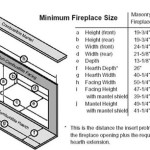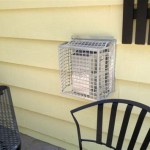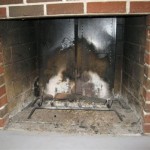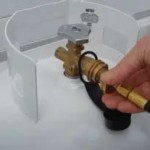Gas Fireplace Ratings: Understanding What They Mean
Gas fireplaces offer a convenient and efficient way to enjoy the warmth and ambiance of a fire. However, with so many models on the market, choosing the right one can be overwhelming. Gas fireplace ratings provide valuable information about the performance, efficiency, and features of different models, helping consumers make informed decisions. This article will delve into the common gas fireplace ratings and explain their significance.
1. Energy Efficiency Ratings: AFUE and BTU
Energy efficiency is a crucial factor to consider when purchasing a gas fireplace. Two primary ratings indicate a fireplace's efficiency: AFUE (Annual Fuel Utilization Efficiency) and BTU (British Thermal Units).
AFUE measures the percentage of energy from the fuel that is converted into heat. Higher AFUE ratings indicate greater efficiency, meaning less energy is wasted. Gas fireplaces typically have AFUE ratings ranging from 70% to 80%, with higher ratings being more desirable. A fireplace with an AFUE of 80% will use 20% less gas than one with an AFUE of 70% to produce the same amount of heat.
BTU, on the other hand, measures the heat output of the fireplace. A higher BTU rating means the fireplace produces more heat. The appropriate BTU rating depends on the size of the room and the desired level of warmth. For example, a small room might only need a fireplace with a 10,000 BTU rating, while a larger living room could require a model with a 40,000 BTU rating.
2. Safety Ratings: Safety Certification and Emissions Standards
Safety is paramount when it comes to gas fireplaces. Several organizations certify and test gas fireplaces for adherence to safety standards. The most widely recognized certification is the Gas Appliance Manufacturers Association (GAMA). GAMA-certified fireplaces meet strict safety requirements, ensuring proper ventilation, combustion, and ignition systems.
Furthermore, gas fireplaces are subject to emissions standards that regulate the amount of harmful pollutants released into the air. Emissions standards vary by region and are typically based on the amount of carbon monoxide (CO) and nitrogen oxides (NOx) released. Check local emissions standards to ensure your fireplace meets regulatory requirements.
3. Features and Performance Ratings: Heat Distribution and Controls
Gas fireplaces offer a variety of features and performance characteristics that enhance their overall value. Some features to consider include:
Heat Distribution: Some fireplaces offer features like forced-air systems or blower systems, which circulate warm air throughout a larger area. This can be particularly beneficial for larger rooms or open floor plans.
Controls: Gas fireplaces typically have remote controls for adjusting the flame height, operating the blower system, and adjusting the thermostat. Some models even offer smartphone connectivity for remote control.
Log Design: Many gas fireplaces feature realistic-looking logs made from ceramic or other materials. Consider the log materials and design to ensure they match your desired aesthetic.
Evaluating these features and performance ratings can help you find a fireplace that meets your specific needs and preferences.

Gas Fireplace Faq Fireplaces Direct Learning Center

The Best Gas Fireplaces Of 2024 Direct Learning Center

Gas Fireplaces Energuide

What Type Of Gas Fireplace Do You Have Www Mygasfireplacerepair Com

Gas Fireplace Insert Cost Forbes Home

Best Gas Fireplace Inserts Fireplaces Direct Learning Center

All About Gas Fireplaces
The Value Of Your Efficient Gas Fireplace Heatilator

Natural Vs Propane Gas Fireplaces What You Should Know

Gas Fireplace Faq Fireplaces Direct Learning Center
Related Posts








